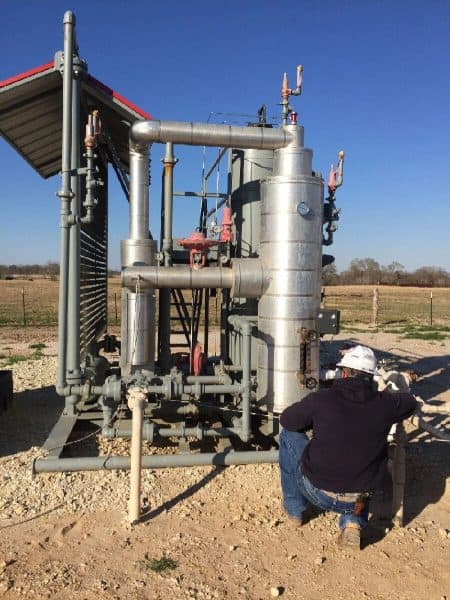Last week my fellow blogger, Amy, and I wrote on utilizing stranded gas and well gas for running well site equipment such as generators and how Croft’s FCS, JTS, and CIS can help clean that gas so it won’t tear up the equipment. Well since we are on a roll, I want to continue the topic of using well gas but instead, using it for compressor stations. So what are compressor stations? What are they used for? How can Croft help? Stay tuned and find out!
What are the compressor stations and why are they important?
So picture natural gas moving through a pipeline. How does it continue moving from point A to point B? When natural gas is being transported through the pipeline, it needs to remain pressurized to ensure a continuous flow of gas as it moves through the pipeline.
To continue transport through the pipeline, it needs to be constantly pressurized by compressing the natural gas in intervals along the pipe. In order to do so, compressor stations must be placed every 40 to 100 miles along the pipeline. Compressing stations, also known as pumping stations, increase the pressure, thus providing energy to move the natural gas through the pipeline. Without these stations, the gas in the pipeline would not sustain pressure which in turn would stop the flow of the gas through the pipeline to the destination.
Engines drive compressors. The three most common types of engines are the turbine, electric motor, and reciprocating engine. It is important that there are no particulates in the gas stream when going through and running the compressors/engines.
Treating the Gas
As you can see from the picture above, there is a gathering facility that treats the gas before entering the pipeline and heading to a compressor station. At these gathering stations, they clean the gas and treat it for impurities, such as dehydrating the gas, removing CO2 and H2S, etc. Although the gas is treated prior to entering the pipeline, some water and heavy hydrocarbons may condense out of the gas while being transported through the pipeline.
For this reason, there must be liquid separators that contain filters and scrubbers that capture liquid hydrocarbons and unwanted particles that could harm the compressors. The removed liquids are collected and may be sold or disposed of. Systems such as the Fuel Gas Conditioning System cools the gas, remove water, and capture liquid hydrocarbons. After the gas is treated, it runs to the gas compressors that are fueled by this FCS where it is re-pressurized and continues through the pipeline. You can see in the picture below, one of Croft’s Fuel Gas Conditioning Units fueling the three compressors shown in the background.
For more information about our natural gas processing units, please contact us or click the links below.
http://en.wikipedia.org/wiki/Compressor_station












